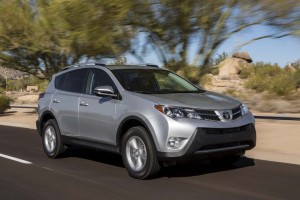
Consumer Reports found that driving 75 mph compared with 55 mph costs drivers an extra $30 on a 1,000-mile trip.
So you dodged the speed traps and cut an hour off your drive from New York to Boston, but you’re still going to pay for that lead foot.
The faster you go the worse your fuel economy, studies have routinely demonstrated, but just how much may come as a surprise. A new study by Consumer Reports magazine suggests that the penalty of driving 75 rather than 55 can add up to as much as 14 miles per gallon – which can add up to an extra $30 in fuel costs over a 1,000 mile trip.
In fact, on long drives, the increased fuel consumption may have an unintended consequence. By burning more fuel you’re likely to stop more often to fill up, the magazine notes, and that means you may lose much of the extra time you hoped to save by speeding in the first place.
The idea that speeding burns more fuel isn’t exactly a new concept. It’s basic physics. It takes more energy to increase your speed as automobiles have to overcome such obstacles as wind resistance and tire friction – never mind the internal losses from the internal combustion itself.
But to see just what all this adds up to in real world conditions, rather than on paper, CR researchers took out five different vehicles: a Honda Accord, a Toyota RAV4 and three different versions of the Ford Fusion, including battery and conventional gas models. They then calculated fuel consumption at 55, 65 and 75 mph speeds.
Jumping from 55 to 75 can cut an hour off a 200-mile drive, but it also can burn as much as two more gallons of gasoline, depending on the particular vehicle, the magazine noted, adding that, “in the cars we used (that adds up to) about $5 to $7. For every thousand miles at 75 mph, you’re increasing carbon footprint by seven to 10 gallons and throwing away about $30.”
Why is 55 the magic number for maximum mileage? If you’re looking at pure physics, it isn’t. That just happens to be the target that was set back in the 1970s, at a time when oil shortages and fast-rising fuel costs led Congress to enact first a 50 mph national speed limit and then raise it ever slightly to the more familiar “double-nickel” that stuck around for years.
The Environmental Protection Agency used that number as the requisite testing point for automotive fuel economy, the source of the mileage numbers on the Munroney window sticker found on every car sold in the U.S.
(Truck sales boom driving down U.S. fuel economy. Click Here to read more.)
The government might have just as well set 50, 60 or even 65 as the test basis and automakers would have responded by specifically tuning their vehicles to deliver the best possible fuel economy at those numbers.
(Click Here to read about the new Corvette getting 30 mpg.)
In fact, data compiled by the Oak Ridge National Laboratory shows that a vehicle moving a steady speed of between 35 and 55 will get roughly the same mileage. The reason has to do with things like transmission gearing. The latest gearboxes, with seven, eight and even nine speeds, are designed to run the engine as slowly as possible when undergoing EPA testing. And that maximizes the resulting fuel economy numbers.
Consumer Reports notes that while driving fast is, well, a quick way to reduce mileage you also cut fuel economy by being erratic on the throttle. Steady as you go is a way to ensure you cut your gas bills.

Few drivers can sustain 75 mph for any length of time in the U.S. except out West where they raised the speed limit to 85 mph or there abouts.
That being said I have pointed out for years the falacy of driving fast resulting in getting where you are going actually being significantly faster due to having to stop for fuel more frequently. The added cost is more today than a few years ago but the reality is people in a hurry often don’t care about the price. After all they are dumb enough to pay $3.50/gal. when there is no need to so they are dumb enough to spend and extra $30.
I did a car forum survey one time asking people who drive above the posted speed limit – regardless of what the speed limit was, i.e. 30, 45, 55, etc. WHY they exceeded the speed limit. The answers ranged from hilarius or insane. A doctor of psychology reviewed the answers and offered a professional analysis which was not very pretty. It showed the mindset of the typical person who exceeds the posted speed limit is very disconcerting.
First, it is suicidal to drive 55 mph on Interstate Highways in Georgia. Secondly, most trips are less than one tank of gas in length. The last time I consumed a full tank was from Atlanta to Virginia Beach – exactly 1 tank, 45 mpg with the cruise set on 82 mph in my Jetta TDI. If I had driven 55, or even 65 mph, I would have had to spend the night somewhere!
BTW, the Toyota RAV4 illustrated in the article, is sold in most markets with a 2.0L turbo diesel with much more pulling power than our gas engine, and gets 35-38 mpg geared for the 80+ mph speed limits in europe. I think someone just WANTS us to burn more fuel.
People come up with the most absurd reasons for speeding…They can rationalize most anything.
The speed limits in Europe tend to be ~62 mph on rural roads and ~75 on autobahns. That however doesn’t mean that the fuel economy is better at ~75-80 mph than at ~65 mph. Aero drag increases exponentially with speed and there are no production autos that get better mpg @ 75-80 mph vs. 65 mph.